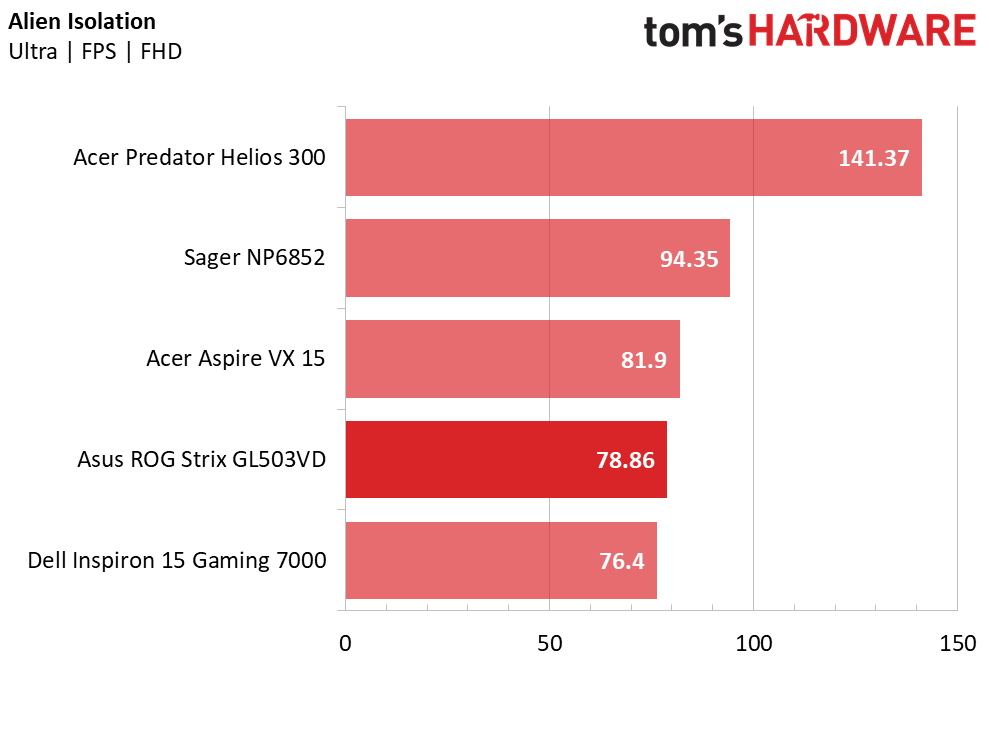Asus ROG Strix GL503VD Gaming Laptop Review
Why you can trust Tom's Hardware
Gaming Benchmarks
Alien: Isolation
Alien: Isolation isn't a difficult game to run, so the Asus ROG Strix GL503VD will feel right at home. The Strix delivered well over 60 FPS, so you won't have to reduce any settings for a good gaming experience. However, it fell behind the Acer Aspire VX 15, despite the latter having a Core i5 CPU. On the other hand, the Dell Inspiron 15 Gaming 7000 came up short of the Strix by a couple of frames.
If pure value is what you're aiming for, the Dell or Acer Aspire will serve you better. The Acer Predator Helios 300 will perform nearly 80% faster, but its extra performance is wasted without a faster display.
Ashes of the Singularity


Ashes of the Singularity's workload is a complete 180 in comparison to Alien: Isolation. Ashes is undoubtedly one of our most strenuous benchmark titles, and even laptops with GTX 1070 GPUs fail to reach 60 FPS. It should come as no surprise that the Strix's performance was suboptimal in this game. The Strix's Core i7 didn't help matters much when compared to the Inspiron, which performed about 8% faster. Even the Aspire performed better than the Strix, but we believe we were given a golden sample in this case. If you want a playable experience at high, you'll need a laptop with at least a GTX 1060. Alternatively, you can turn the dials down and get away with well over 30 FPS on the Strix, which was around 4 FPS better than the Aspire.
DiRT Rally
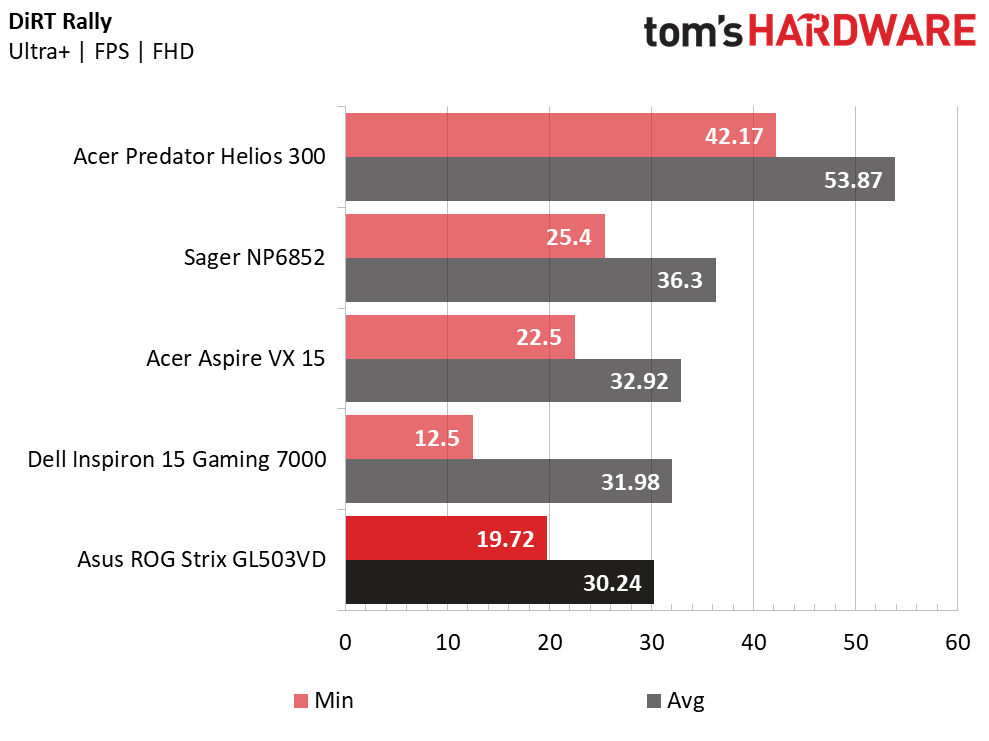
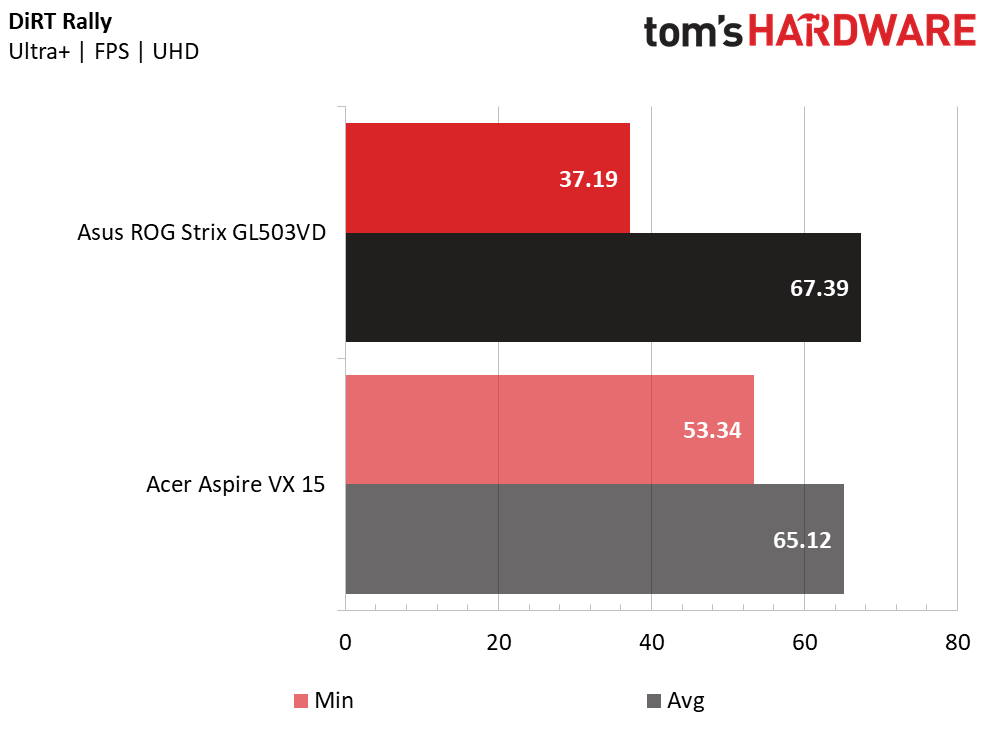
DiRT Rally becomes platform-bound once a certain level of GPU performance is achieved. However, budget-oriented laptops will be bottle-necked by their weak GPUs. The Strix's performance is a perfect example of this; the Dell Inspiron delivered around 6% more performance than the Strix, thanks to its GTX 1050 Ti. The Aspire defied expectations yet again, besting the Strix by a couple of frames. The Sager, despite its GTX 1050 Ti, didn't fare much better than the bottom three laptops. However, the GTX 1060-based Helios came close to 60 FPS, and that's easily achieved with minimal tweaking. The Strix can also reach 60 FPS, but the graphical settings must be reduced by far more.
Grand Theft Auto V

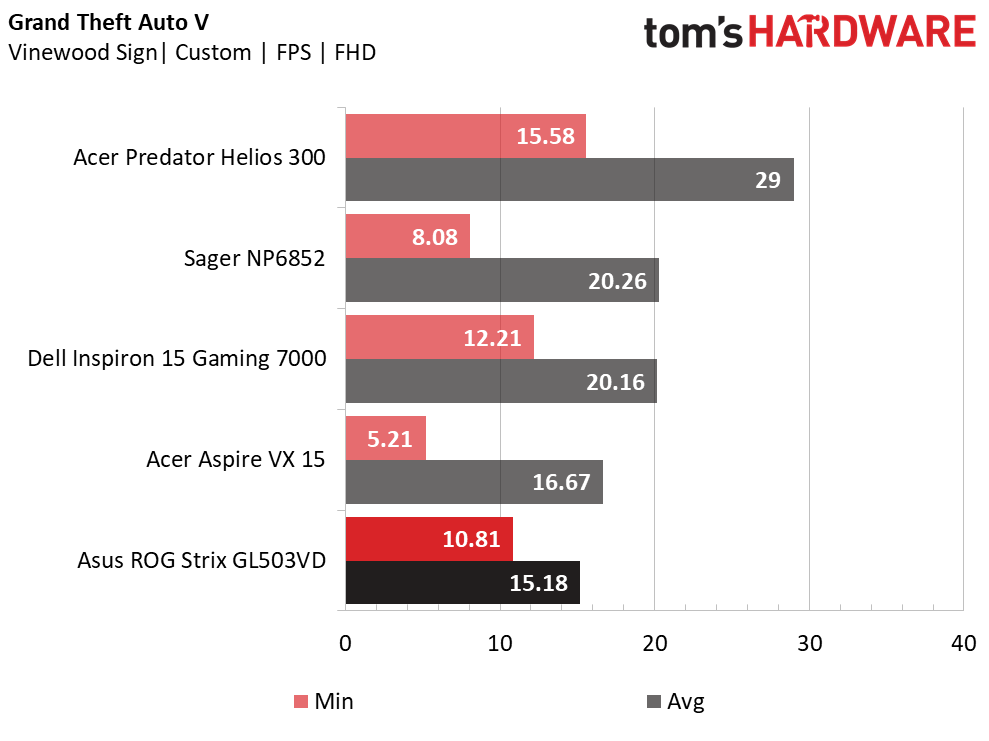

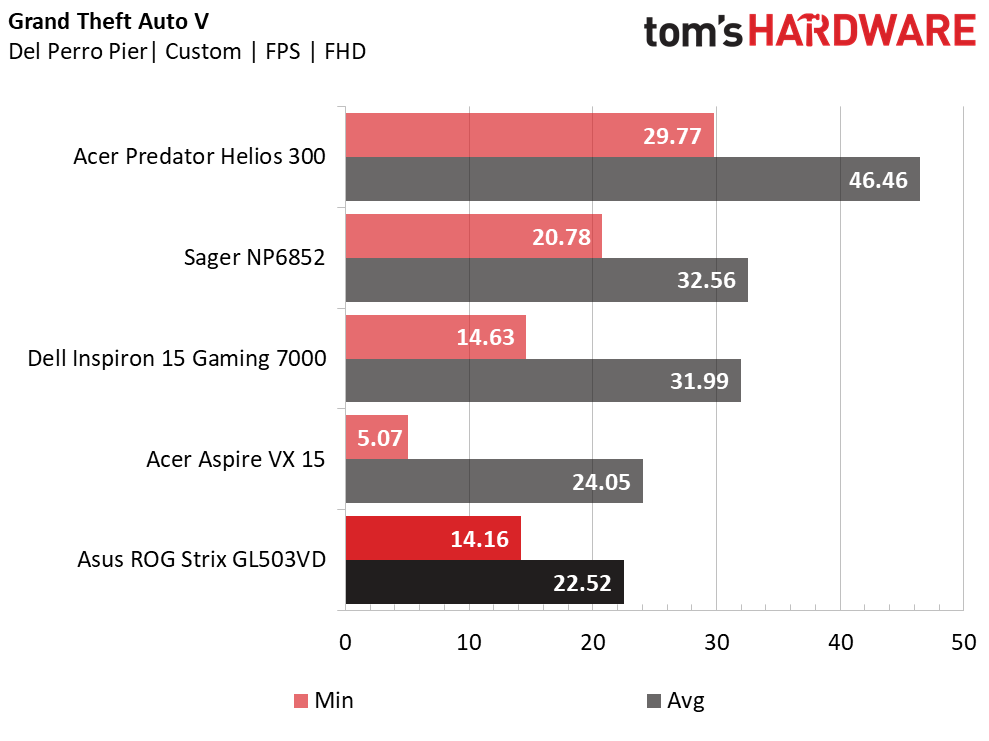
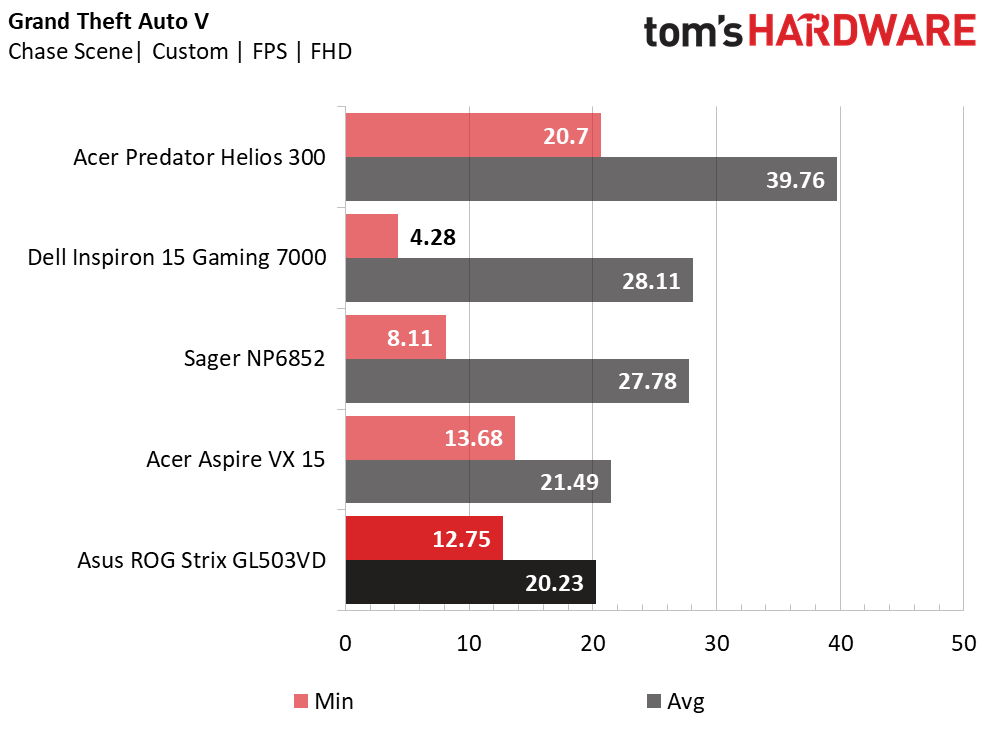
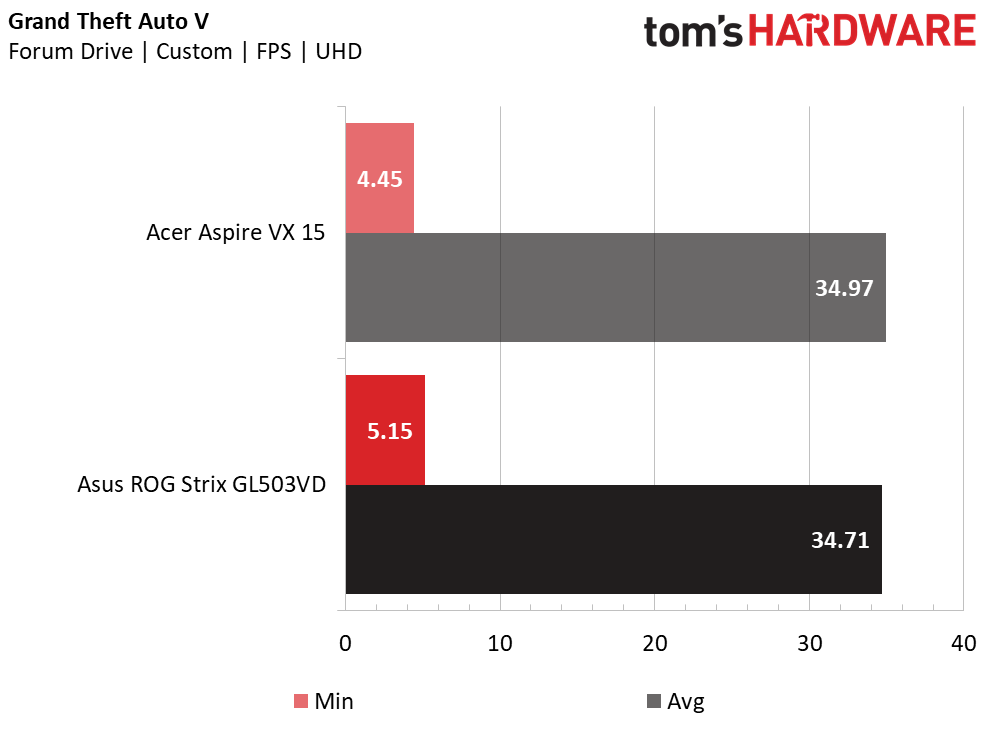
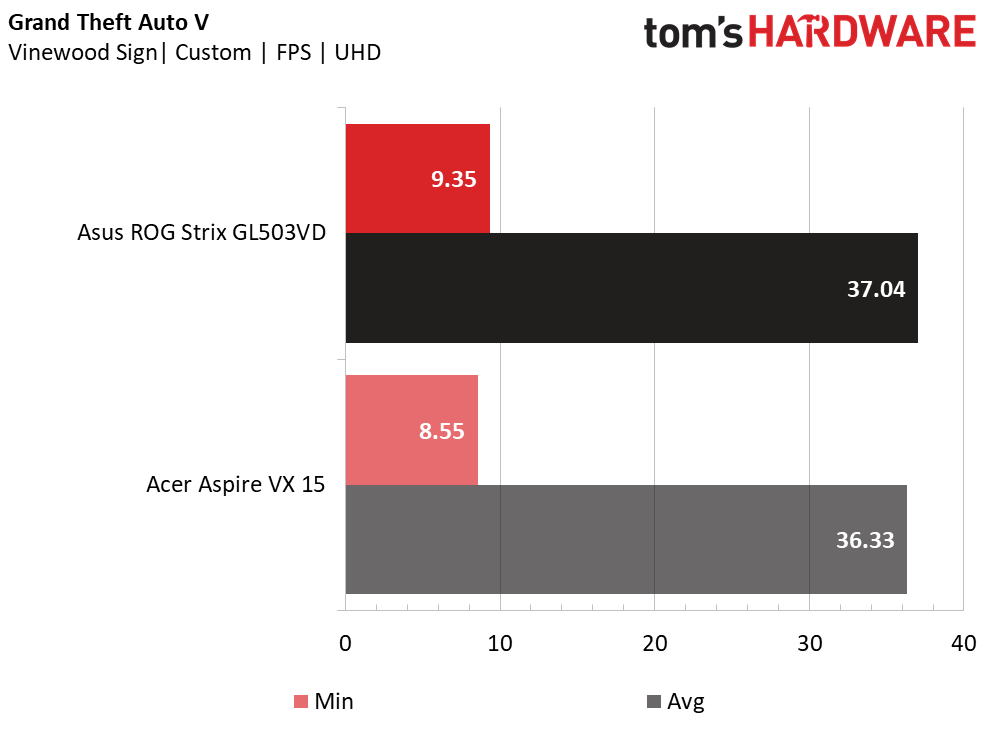
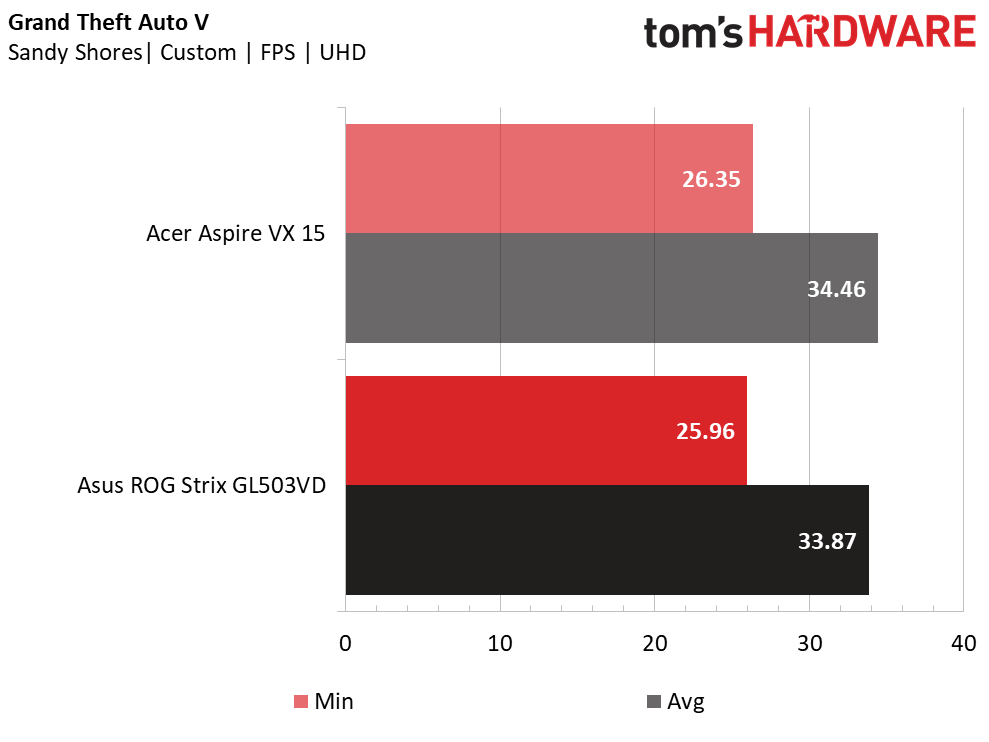


Grand Theft Auto V is yet another intensive title, and even the GTX 1060-based Helios struggled during certain scenes. Unfortunately for low-end laptops like the Strix, this means that performance slows to a snail's pace. The Sager and even the Inspiron performed much better than the Strix, sometimes coming close to 30 FPS, but you're still better off either upgrading to a Helios or, if you're working within a budget, dropping the settings. With the heat turned down, the Strix can comfortably deliver frame rates in the mid-to-high 30s.
GRID Autosport
GRID Autosport is easy to run. The Strix finally gets its due here, thanks to this game's dependence on the whole platform, not just the GPU; the Core i7 granted the Strix about a 16% higher frame rate than the Inspiron and a 4% higher frame rate than the Aspire, pulling its performance above 60 FPS. In this laptop price range, you'll often have to turn down your settings to get an enjoyable experience. GRID is one of the few cases where you don't have to.
Hitman
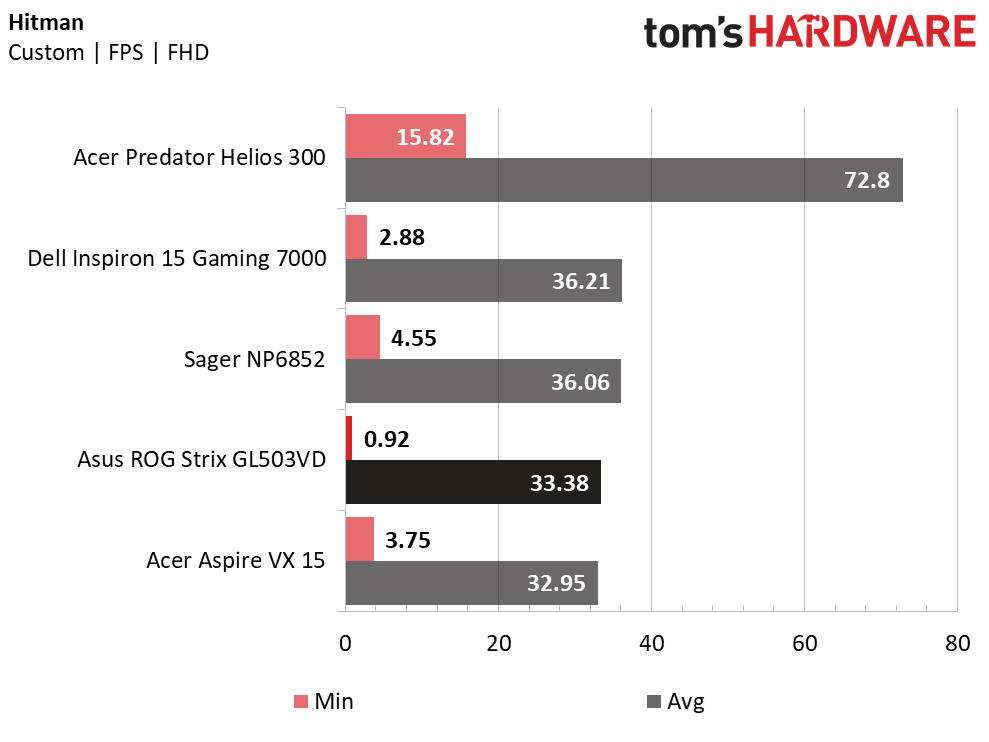

Similar to DiRT Rally, Hitman becomes a platform-based title once you have an adequate amount of GPU horsepower. Beneath this threshold, however, every bit of GPU strength helps. The Strix outpaced the Aspire, but by just a fraction of a frame. Meanwhile, the Sager and Inspiron both maintained about 8% additional performance thanks to their GTX 1050 Tis. With the Strix, you can achieve frame rates close to 60 FPS by reducing the settings; alternatively, shelling out a tiny bit more for the Acer Helios will result in more than double the performance without compromises.
Get Tom's Hardware's best news and in-depth reviews, straight to your inbox.
Metro: Last Light Redux
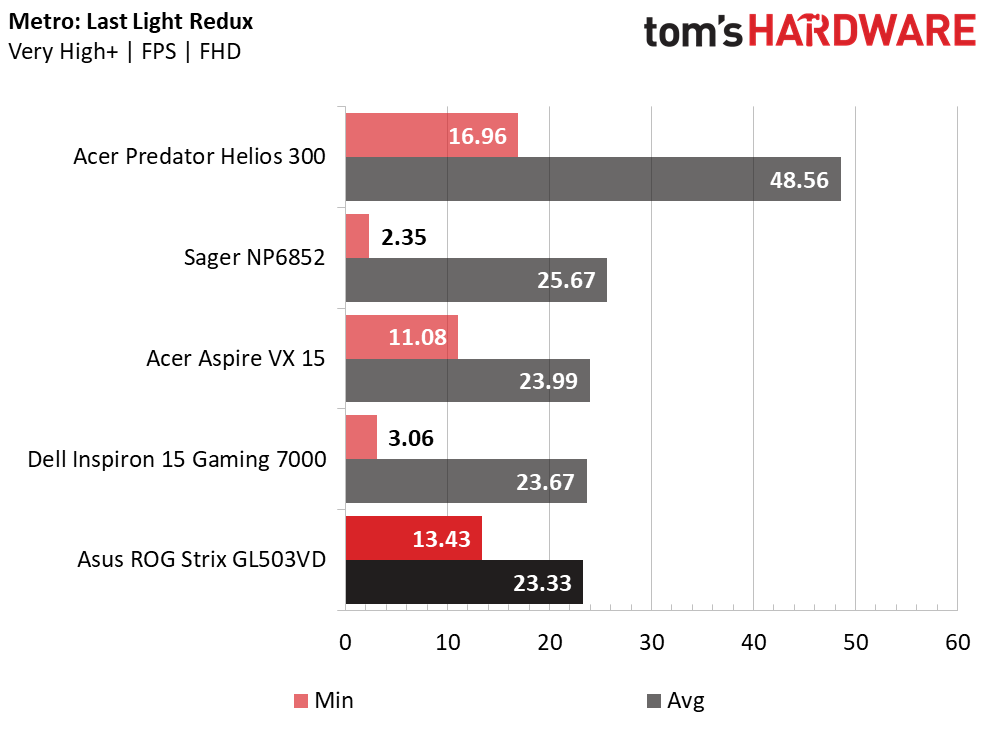

With Metro: Last Light Redux, we're faced with yet another GPU-reliant title, and one we've resorted to time and time again because of how demanding it is. Metro's heyday is over; nowadays, anything with a GTX 1060 will provide great performance. Anything below that? Not so much. The Strix's, Inspiron's, and Aspire's performance differences were all within less than a frame. The Sager fared slightly better, delivering about two more frames, which is hardly enough to make a difference below 30 FPS. Meanwhile, the Helios cruised by with close to 50 FPS and can easily reach 60 FPS with minimal tweaking. Luckily, you can achieve this frame rate by reducing your settings. Once again, the Strix outperformed the Aspire when the graphics were reduced.
Rise of the Tomb Raider
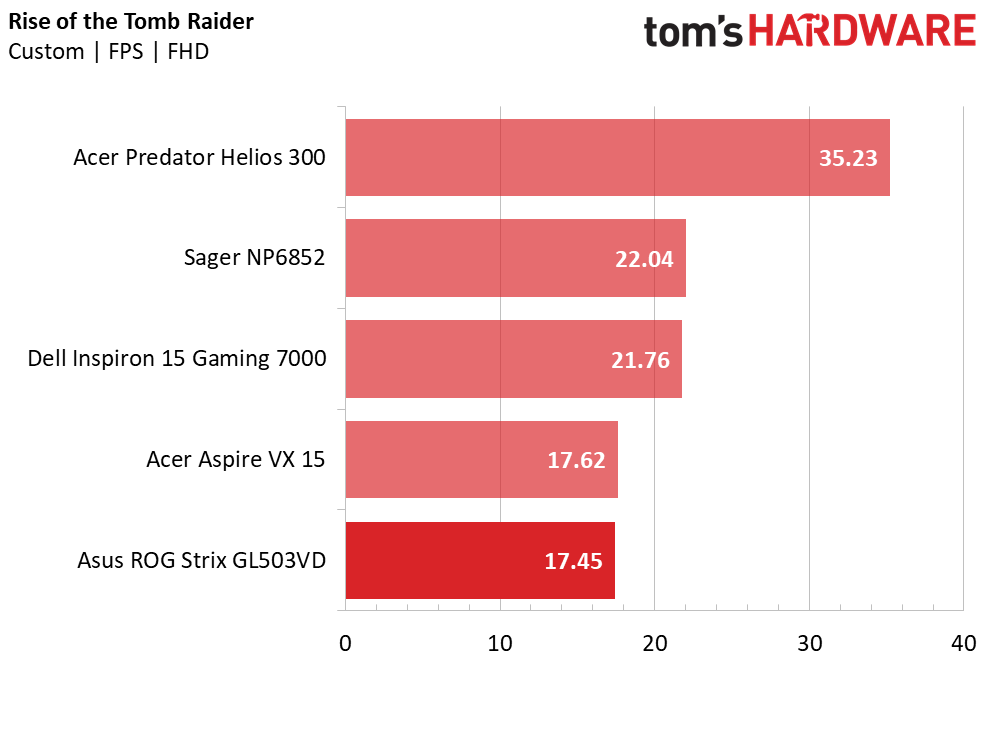

Rise of the Tomb Raider ups the graphical ante even more, to the point where even the Acer Helios falls within the 30 FPS range. The Strix and Aspire, both containing GTX 1050s, performed 50% slower than the Helios, hovering around 17 FPS. Meanwhile, the GTX 1050 Ti-based Inspiron and Sager delivered little more than 20 FPS. Lowering the settings to medium will double the Strix's performance, but you'll need to dig deeper to get anywhere remotely close to 60 FPS.
The Division
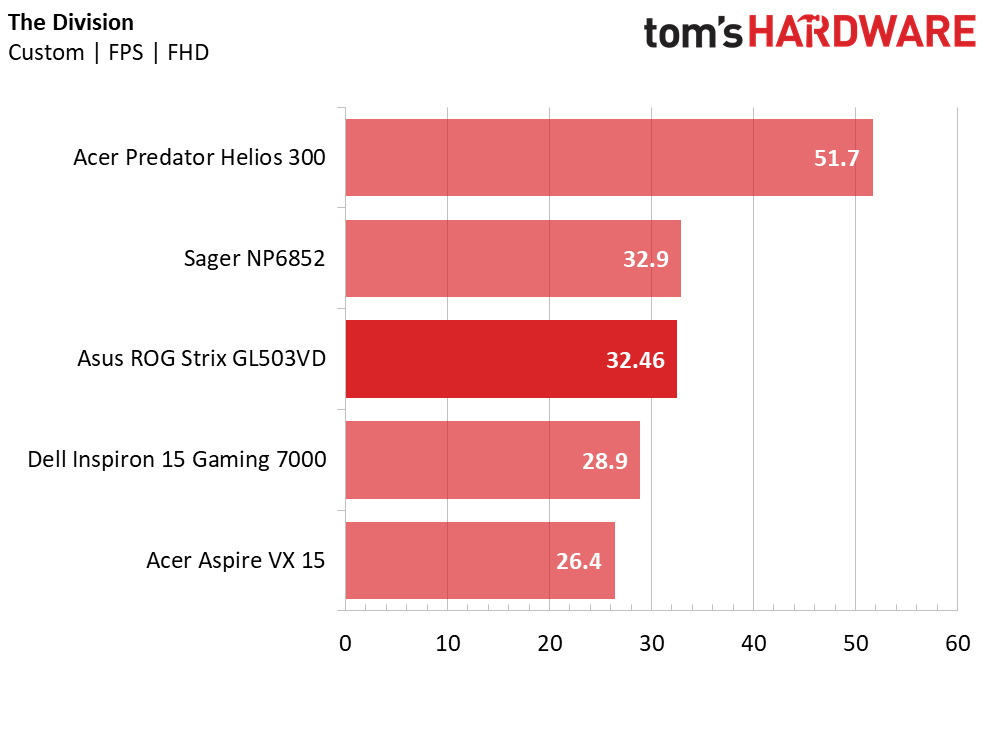
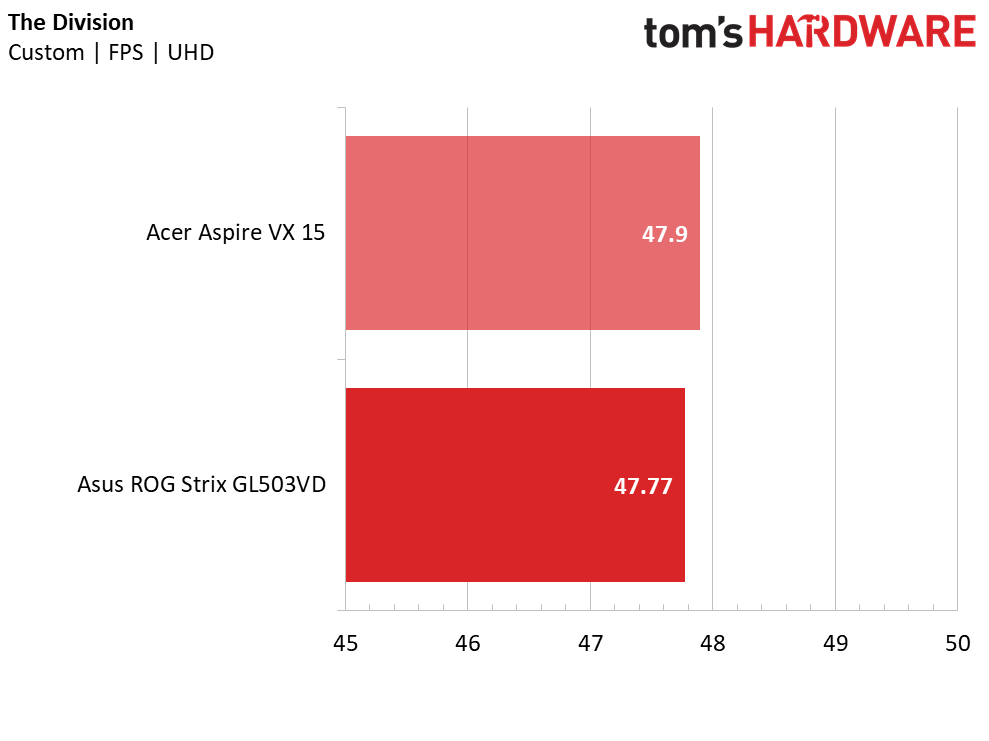
The Division features a GPU-intensive workload, but it isn't as demanding as Metro or RotTR. Because of this, the Strix produced playable frame rates at high settings with its GTX 1050. Its Core i7 granted it a slight edge against the Aspire and Inspiron, which fell short of the 30 FPS threshold. By dropping to the Medium preset, you gain only 15 FPS, whereas the Helios is capable of over 50 FPS without adjusting the settings.
Thief
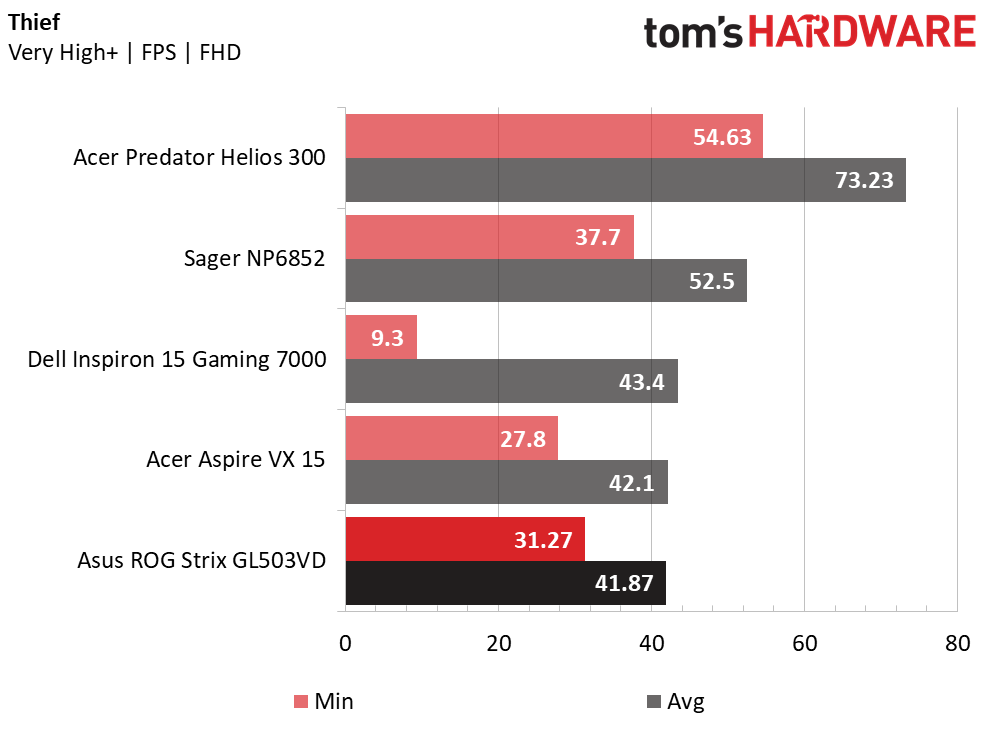
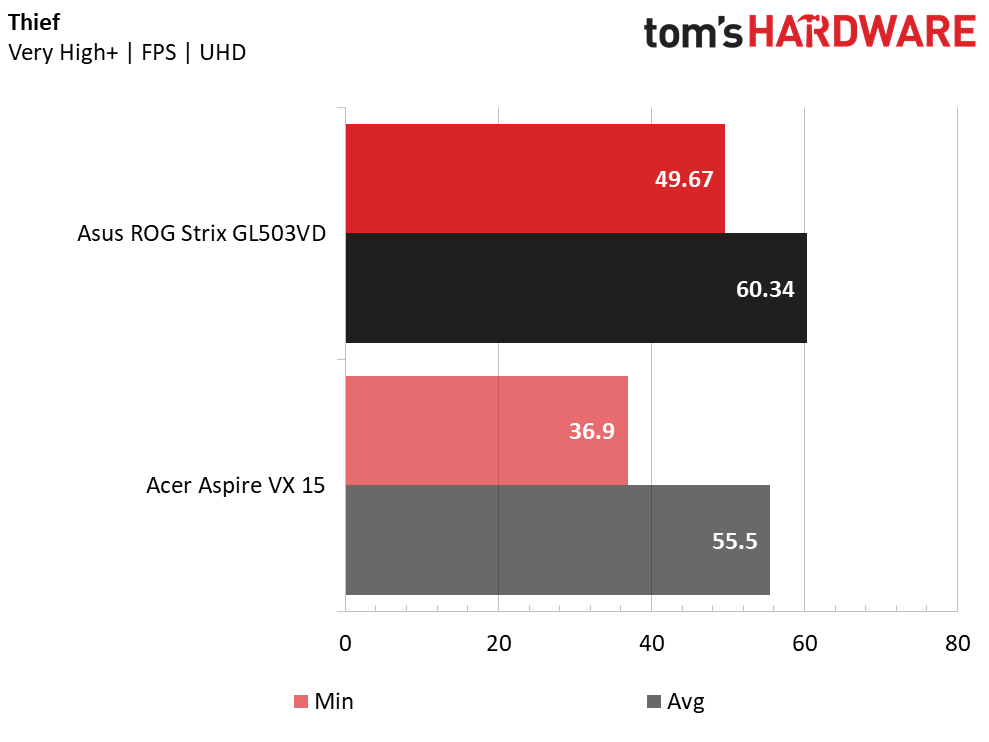
After the trials and tribulations imposed by the last few titles, we finally end our gaming benchmark session with Thief, which is fairly easy to run. The Strix didn't particularly impress on this one; it only matched the Aspire and Inspiron's performance, while the Sager's GTX 1050 added an additional 10 FPS to the mix. Luckily, Strix users can reach just over 60 FPS using Thief's Normal preset. This still isn't as impressive as the Helios, which maintained more than 70 FPS without compromise.
MORE: Best Gaming Laptops
MORE: Gaming Laptop Previews
MORE: All Laptop Content
Current page: Gaming Benchmarks
Prev Page Synthetic Benchmarks Next Page Battery, Thermal & Display Testing